Father of Modern Boise: James Alonzo Pinney
Sue Paseman and Ann Felton
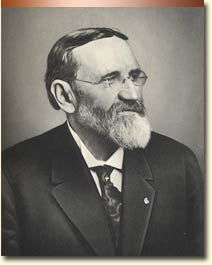
On July 12, 1881, Boiseans elected James Alonzo Pinney to the first of five terms as mayor. Pinney, a merchant and patron of the theater, was also a builder who sponsored some of Boise’s best architecture. As mayor, he spearheaded the building of sewers, streets, a cemetery, a bridge, and many fine public buildings that made Boise a regional hub.
Key events
- 1884: Completion of the Oregon Short Line.
- 1890: Nation’s first geothermal home heating.
- 1890: 1890, July 3: Idaho statehood.
- 1891: Electric streetcar service begins in Boise.
- 1892: Natatorium opens on Warm Springs.
- 1905: Carnegie Library, St. John’s Cathedral built.
- 1905: Frank Steunenberg assissinated in Caldwell.
Born in 1835, in Franklin County, Ohio, Pinney spent his early years in the Midwest. In 1850 he traveled with his father to the California gold mines. When his father returned to Iowa, Pinney found work as a clerk and soon was running pack trains to the mining camps. In 1859, after spending a short time with his family in Iowa, he continued packing goods, constantly chasing the gold across the Northwest, first into Oregon and eventually to central Idaho. He reached Bannock City (future Idaho City) in 1863.
On March 1, 1863, as 10,000 miners descended on Idaho City, Pinney and J.W. Stearns opened a mercantile store. Pinney also became the Idaho City postmaster. In 1864 he married Mary E. Abbott of Wisconsin and settled into the life of an entrepreneur. Pinney soon opened a playhouse in the community. His mercantile business prospered, but fires destroyed his buildings in 1865 and 1867. Sadly, in 1869, Mary Abbott Pinney died before the couple had any children. That year the merchant opened a bookstore on Boise’s busy Main Street. In 1872, Pinney relocated to Boise and purchased a mansion about three blocks from his Main Street store. In a year he was married to Mary Agnes Rogers. They would have five children, three of which lived to adulthood.
In 1881 Pinney’s first task as mayor was to find a proper location for a city cemetery. Spring floods had taken their toil on the old Cottonwood Creek cemetery above Fort Boise. Morris Hill on the bench above the floodplain was a logical choice. To reach Morris Hill, Pinney and city council raised money for a new road and bridge. Flooding damaged the bridge soon after construction requiring the city to rebuild part of it. The Pinney administration also purchased the main bridge across the river and abolished its toll.
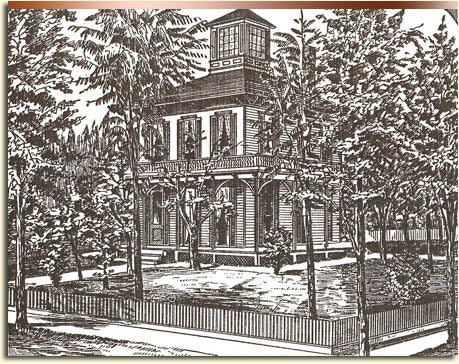
In 1883 an outbreak of diphtheria sold Boise on the urgent need for a sanitary sewer system. Mining tycoon Joseph Delamar offered Boise a $90,000 loan if the city reelected Pinney. With Delamar’s loan and the voters’ mandate, Pinney invested $50,000 in a sewer and $40,000 in a new city hall. Mayor Pinney also pioneered the effort to establish a sidewalk system by pouring concrete walks in front of his own home at his own expense. Others followed the mayor’s example, giving Boise a modern look.
Pinney had less success with a plan to expand the city limits from Grove Street to the Boise River. Opponents boycotted his bookstore over the plan but nevertheless, in 1883, the annexation passed.
That same year the city met its educational needs with the addition of Central school on 8th Street between State and Jefferson. A Main Street fire station with upstairs rooms for city council became Boise’s first municipally owned building.
Mayor Pinney stepped down after his second two-year term in 1885. Reelected to a third term in 1889, he hosted the constitutional convention that applied for Idaho statehood. Before the end of Pinney’s third term, Boise had an electric trolley, a sandstone bank, a tree-line boulevard, and the Natatorium. Pinney hired a German-American architect to build a Rhenish Revival City Hall at 8th and Idaho, opened in 1893.
Pinney loved the theater. In 1888 he had managed Peter Sonna’s Main Street opera house. Four years later he built the ornate Columbia Theater on Jefferson between 8th and 9th. His five-story Pinney Theater replaced the Columbia in 1908.
Pinney’s fifth and final term as Boise mayor was marked by morality in politics conflicts over liquor and prostitution. Having lost to the prohibitionist Democrat James H. Hawley in 1903, Pinney defeated H.S. Hays in 1905. Both Hays and Pinney had positioned themselves as good-government “progressives.” The Idaho Statesman had supported the Democrat Hays, an outspoken moralist. Republicans supported Pinney with advertisements in The Capital Evening News. Both candidates accused the other of ties to gambling and prostitution. Republic woman also decried vice in the red light alleys behind Main Street saloons. Feeling disappointed by the results of the previous Mayor’s term, they vowed to no longer permit the “emotional stampeding” of the woman’s vote and called for fellow woman voters to looking at actions not claims. Pinney also won endorsements from union leaders who called the Boise merchant a friend of “the toiling class.” Easily victorious, Pinney won his last election with two-thirds of the vote.
Pinney’s last administration focused on infrastructure championing sewers and better roads for automobiles. In 1907, when the state legislature approved a new city charter, election day moved from July to April. The charter also ended the neighborhood ward system by requiring the four members of city council to be elected by the voters at large. Opponents objected that at-large voting would disenfranchise immigrants and minorities. The charter cut Pinney’s fifth term short by two months. He retired from public office in April 1907.
On February 4, 1914, Pinney became suddenly ill at work in his theater office. Six hours later he died. Remembered as kind, patient, and generous he was eulogized in the theater he so dearly loved.
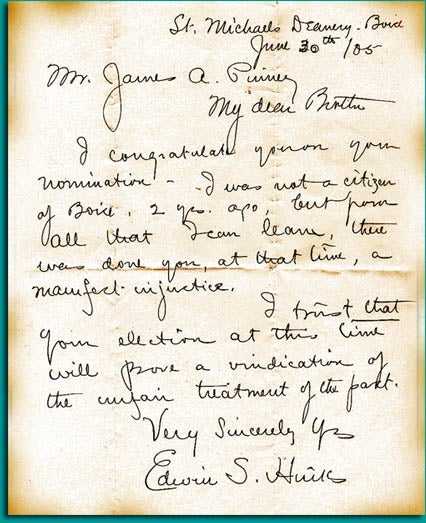
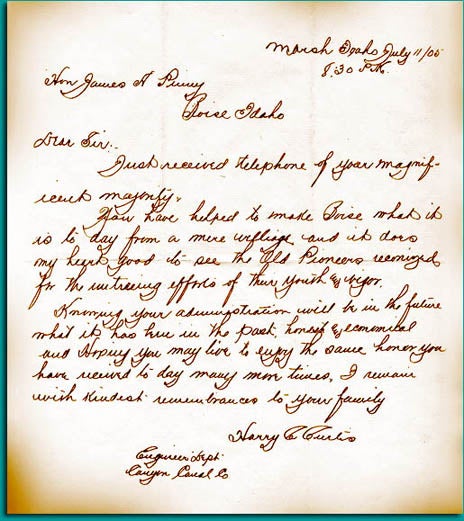
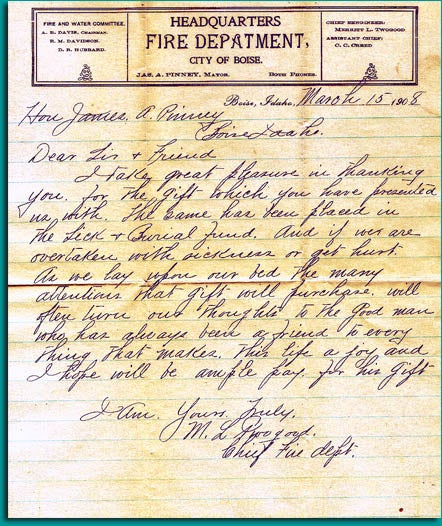
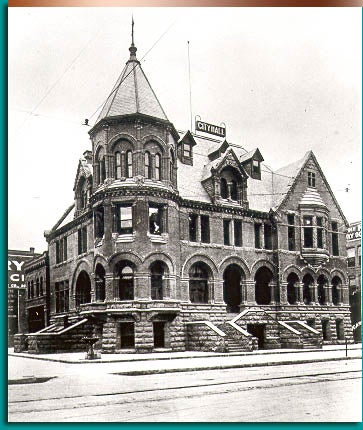
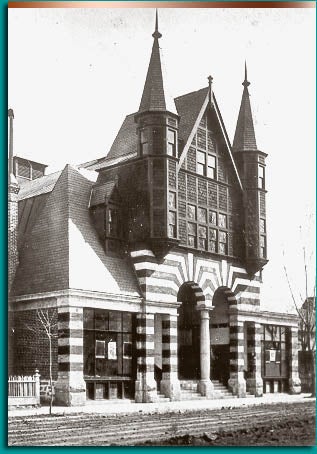
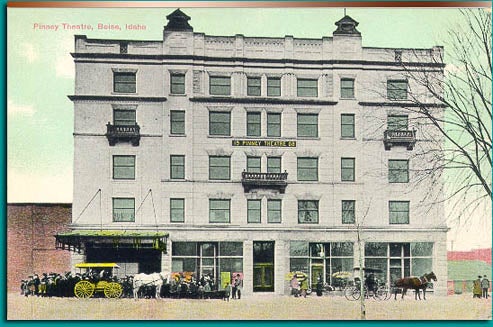
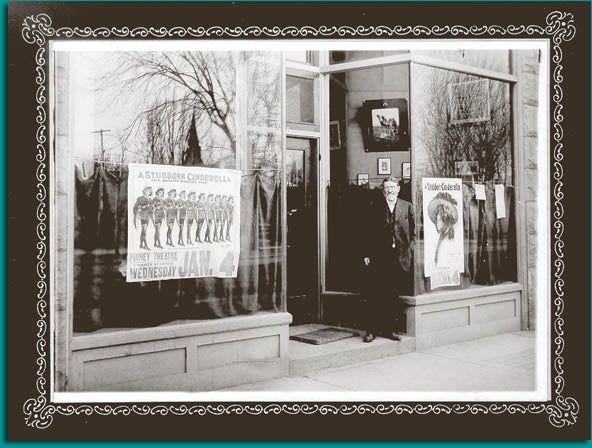
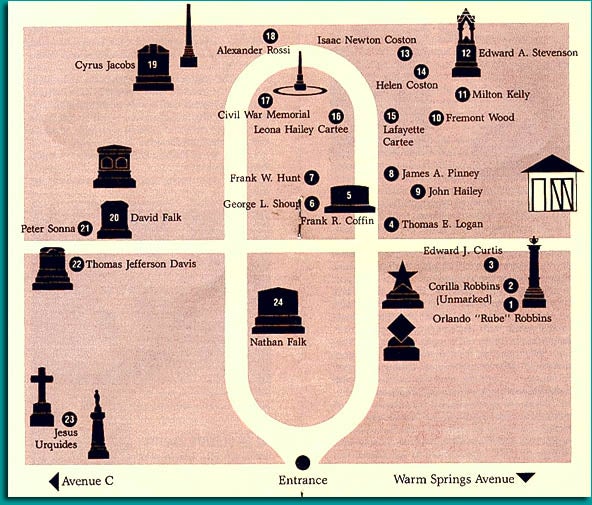
Key sources
“Chronological History of Idaho,” n.d., http://gov.idaho.gov/fyi/history/1890-99.htm (26 March 2006).
Hartman, Hugh H. The Founding Fathers of Boise: 1863-1875. Boise: Idaho State Historical Society, 1989.
“James Alonzo Pinney.” ISHS Reference Series, Number 590. Boise: Idaho State Historical Society, Revised 1981.
“Pioneer Cemetery: A Self-Guided Tour.” Boise: Idaho State Historical Society
The Capital Evening News, July 1905 – April 1907.
The Idaho Statesman, December 1911 – February 1914.